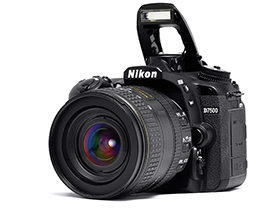We have been hearing all sorts of rumours about the possible replacement of the Nikon D7200, and now we have got the camera on our test bench. The new D7500 boasts many features that have climbed down from the DX-format flagship D500. Of course, Nikon has to do justice to the D500 and we do not expect this newbie to lure people away from the flagship. Well, it is time to put the D7500 to test.
all sorts of rumours about the possible replacement of the Nikon D7200, and now we have got the camera on our test bench. The new D7500 boasts many features that have climbed down from the DX-format flagship D500. Of course, Nikon has to do justice to the D500 and we do not expect this newbie to lure people away from the flagship. Well, it is time to put the D7500 to test.
Design and Build Quality
The D7500 is as large as a full frame body. The camera has a nice and deep grip. The body is predominantly made of carbon composites and has comprehensive weather sealing to protect the electronics from the elements. The body is taller than usual, probably to accommodate the large and squarish LCD. This makes the camera rather boxy. The layout is similar to other Nikons. Both the lens mount and tripod receptacle are metal.
Key Features
The D7500 uses a DX format (23.5 x 15.7 mm) CMOS sensor with 20.9 million effective pixels. This is about 3 megapixels less than the 7200, but this should not particularly worry potential users. The camera captures still images in Raw (NEF) or JPEG format. Of course, simultaneous Raw and JPEG recording remains. As usual, Raw can be 12 or 14-bit, with lossless or lossy compression while JPEGS provide Fine, Normal and Basic options. Still images are captured with maximum dimensions of 5568 x 3712 pixels.
The camera uses an eye-level pentaprism single-lens reflex viewfinder with a Type B BriteView Clear Matte Mark II focussing screen with AF area brackets and framing grid display.

